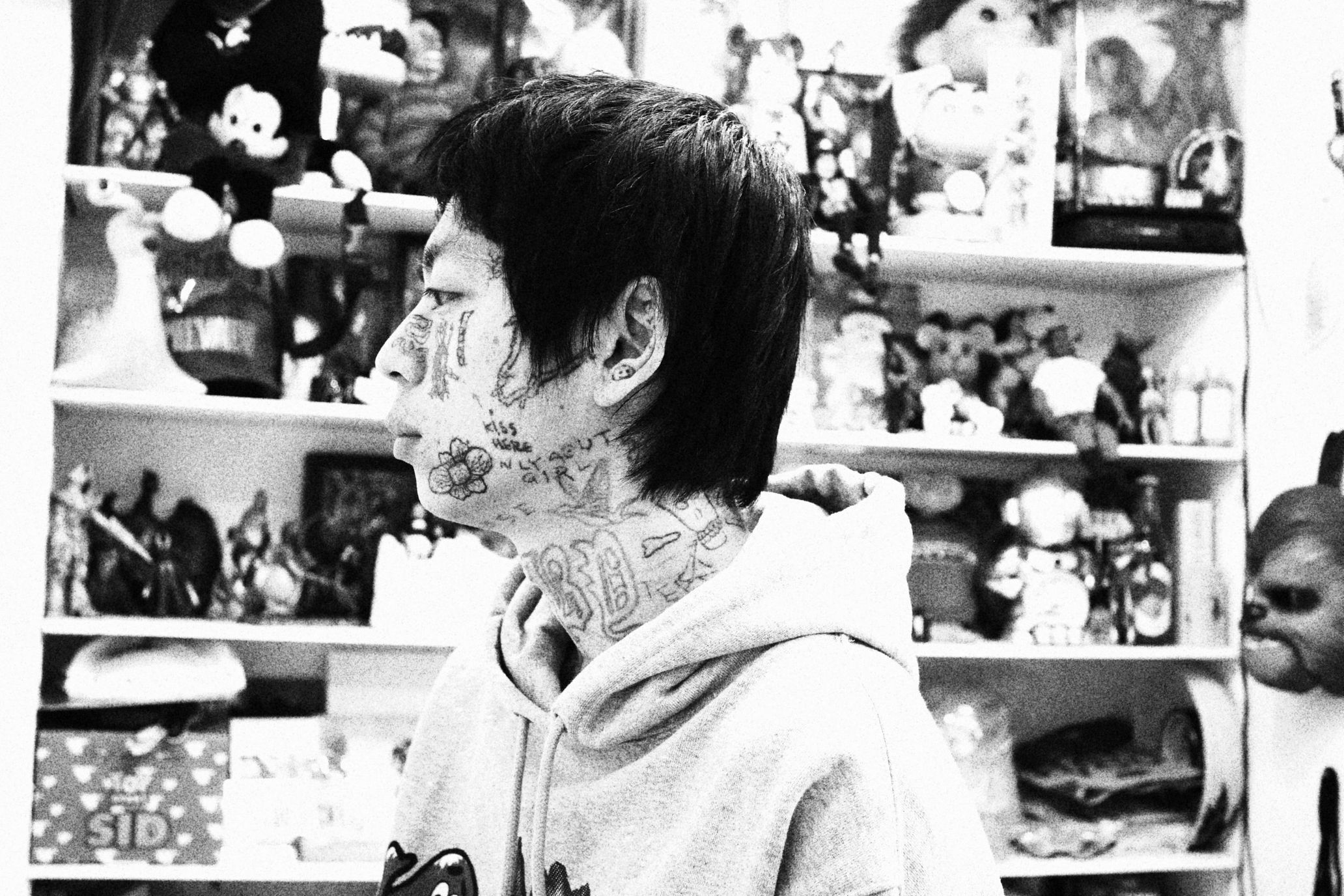
TAPPEI is a tattoo artist with a signature style. His loose, doodle-like tattoos have a catchy feel, but many include humorous and ironic messages. His singular style goes beyond tattoos; many fashion brands look to him for collaborations. He’s one to watch in the Tokyo culture scene.
To learn about his world, we spoke to TAPPEI about his early beginnings, current tattooing career, and hopes for the future.
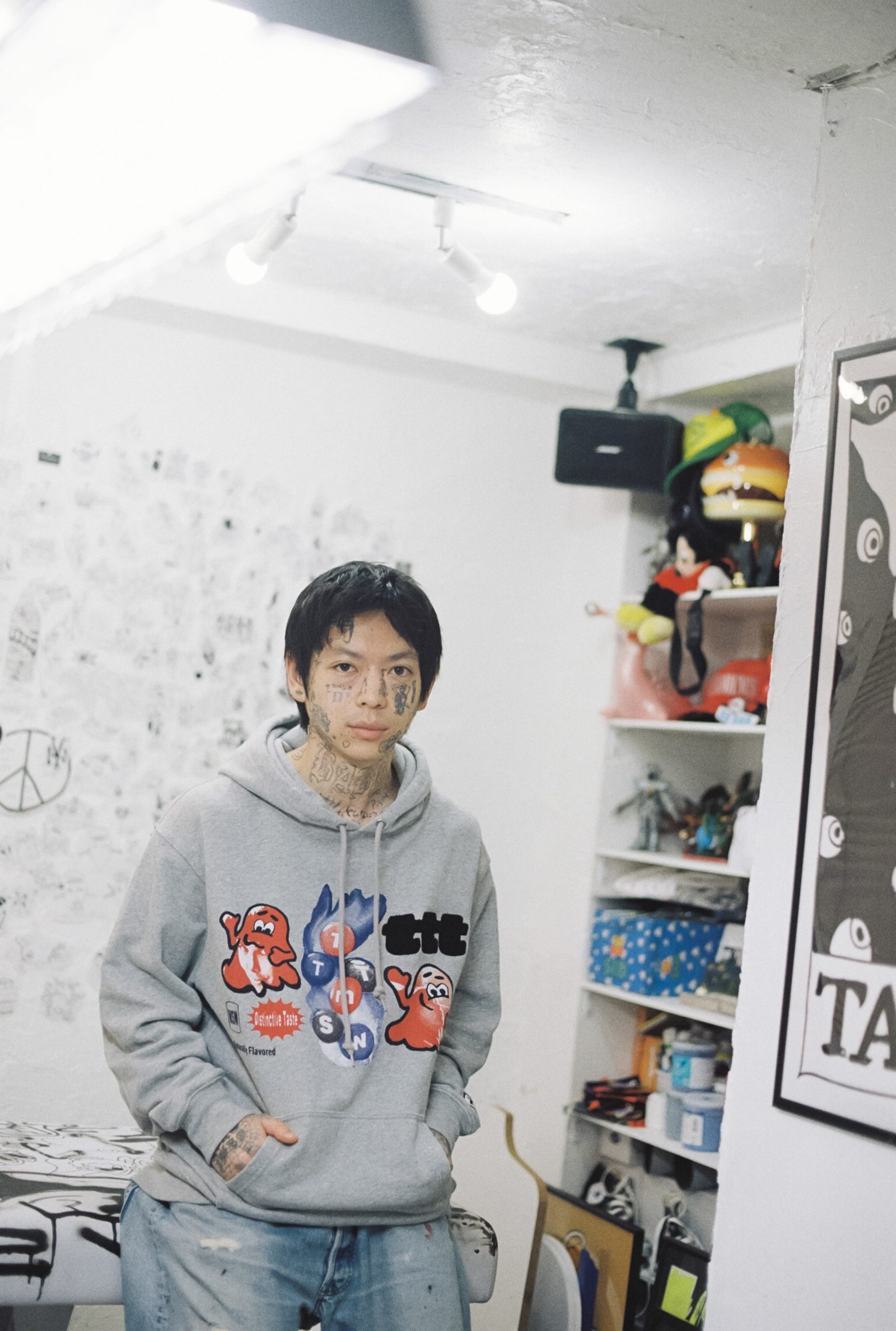
TAPPEI
TAPPEI is a tattoo artist who was born in 1993 in Osaka. He’s been based in Tokyo since 2015. In 2020, he opened his art and tattoo studio, TAPPEI Room, in Nakameguro. He’s collaborated with many brands, such as Undercover and Nike, and also does graphic design and art direction.
Instagram:@tappeis
The road to becoming a tattoo artist
――When did you start developing an interest in tattoos?
TAPPEI: When I was in elementary school, I saw tattoos covering a character’s whole back in the last scene of Zatoichi by Takeshi Kitano, and I thought that was cool. That was the start.
――You were first drawn to wabori (Japanese-styled tattoos).
TAPPEI: Yes. The first tattoo I got was wabori.
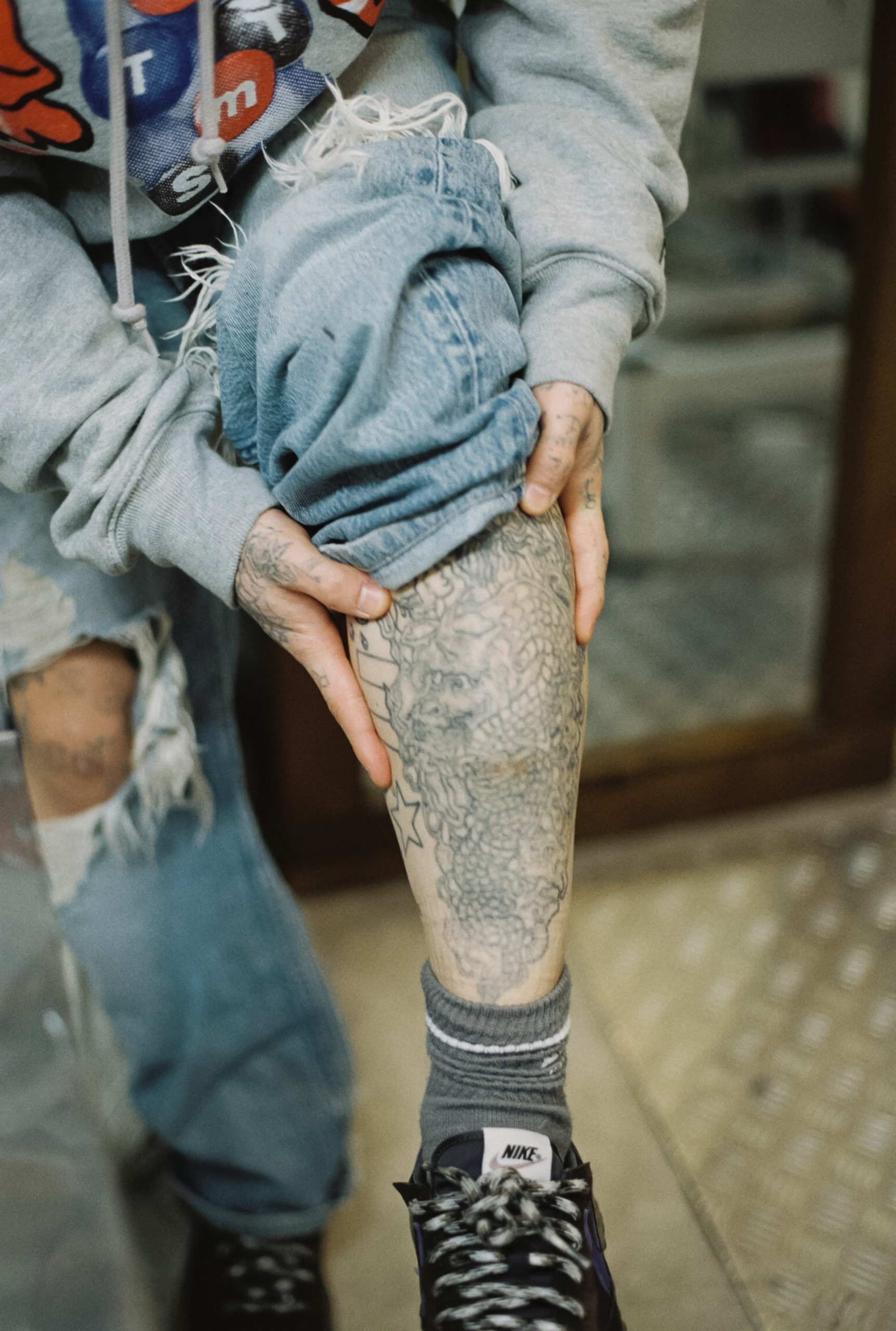
TAPPEI’s first tattoo
――I didn’t expect that, considering your current style.
TAPPEI: I liked other tattoo styles too, but I wanted to get wabori as my first tattoo, as that was the style I fell in love with first.
――Aside from that style, what sort of tattoos did you like?
TAPPEI: The tattoos I used to look at the most in high school were the ones skaters abroad would get just for fun. They weren’t technically good, but that made them cool. I feel like that informed my current style.
――So, your tattooing origins come from there.
TAPPEI: Right. After I got a wabori tattoo, I realized I liked stick and poke-ish styles better. After that point, I got many tattoos similar to my current style, but they were much more stick and poke-ish. Simply put, my technical skills weren’t ripe yet. I couldn’t tattoo the way I do now. The direction was the same, but my tattoos were more loose and casual back then.
――How did you get better?
TAPPEI: I had to gain a lot of experience. I would tattoo myself.
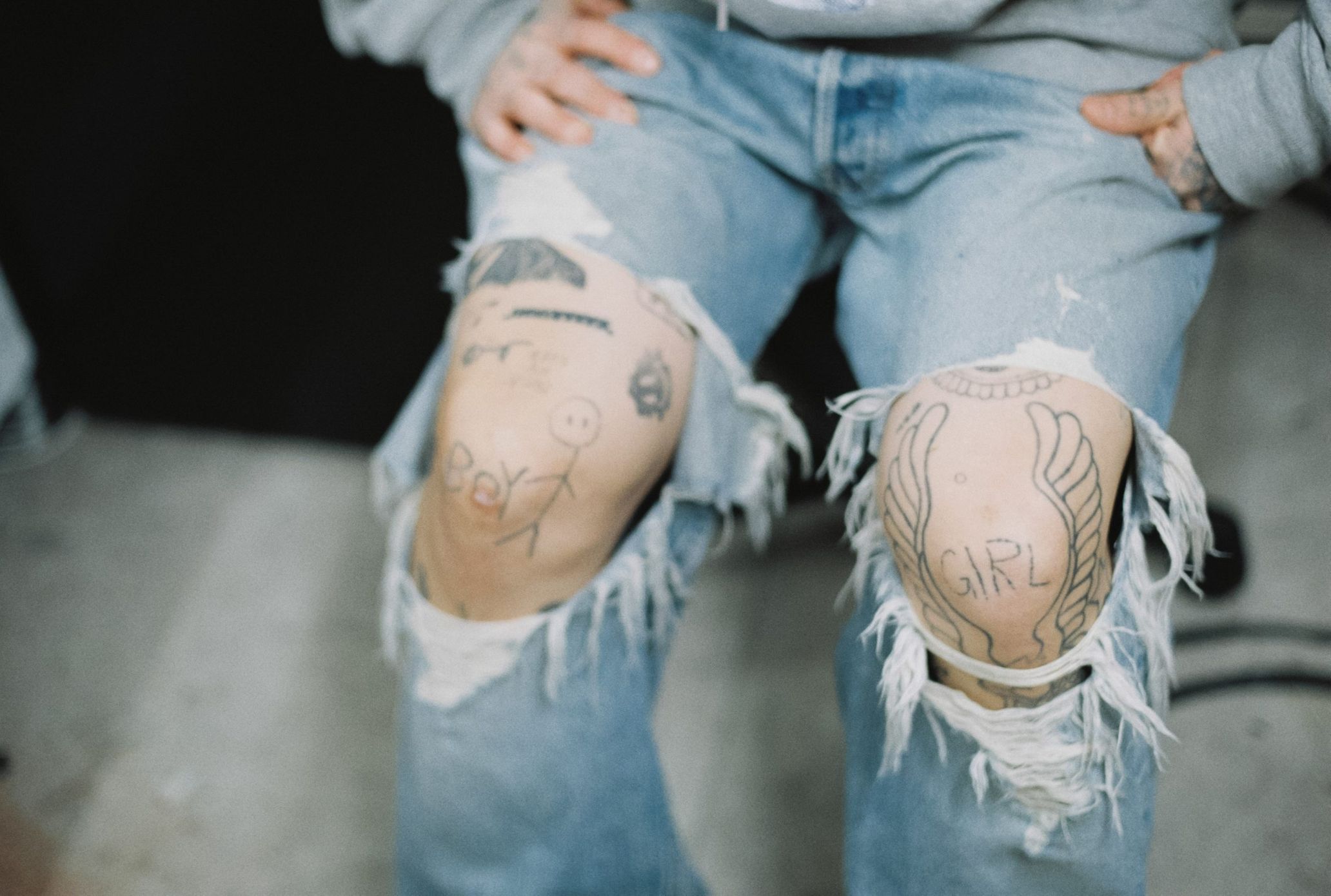
――Which tattoo hurt the most?
TAPPEI: My nipple, hands down (laughs). I was hanging out with a friend and tried to tattoo a smiley face back when I was still new to tattooing. Tattooing the dots for eyes hurt so bad (laughs). I finished it out of stubbornness since my friend was there, but I would’ve stopped if I were alone.
――That sounds so painful (laughs). Did you enjoy drawing as a child?
TAPPEI: I’ve been drawing for as long as I can remember. I briefly went to an art school in Kobe for university.
――Did you attend an art school because you wanted to do something besides tattooing?
TAPPEI: No, I had already started tattooing at that point. I genuinely liked to draw, so I wanted to study it properly. But the school wasn’t what I expected, so I quit immediately.
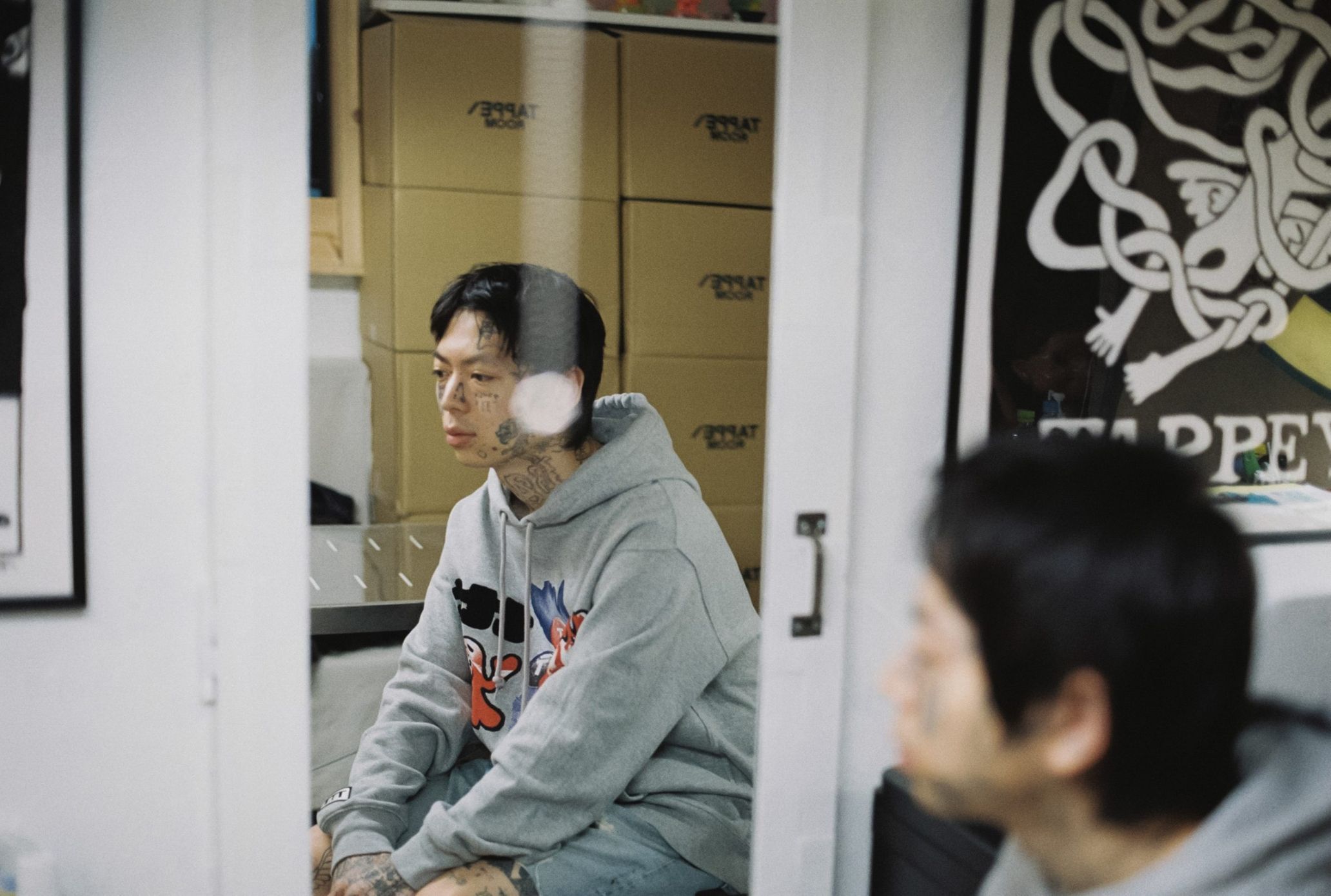
――What did you do after that?
TAPPEI: I quit university when I was 19 and practiced tattooing while working part-time in Osaka. In Osaka, American traditional tattoos were popular, but my tattoos had the same feel as the ones I do now. Only a few people wanted to be tattooed by me. I moved to Tokyo without overthinking it because I thought more people would want to get tattooed by me.
――You used to work at Cannabis, a boutique, in Harajuku. Did you start working there as soon as you moved?
TAPPEI: No, I worked at a call center that allowed tattoos after moving. I practiced tattooing at home and tattooed only a few people every month. I started working at Cannabis after that.
――You must’ve felt inspired working at a clothing store and tattooing at the same time.
TAPPEI: I did. I liked vintage clothing, so I always wanted to work at a clothing store. I was happy when I got asked to work at Cannabis. There was a brand called SUB-AGE, and I got to design graphics for them. I learned so much from that experience.
――When I hear SUB-AGE, I picture Johnny Hiramoto-san. I used to see him at Cannabis quite often.
TAPPEI: Johnny Hiramoto-san is the one who introduced me to Cannabis. He was there when I went to the store and was like, “I like your tattoos. I want one tomorrow!” I started helping him out, eventually leading me to work at Cannabis.
――It sounds like Johnny-san played a significant role.
TAPPEI: Yes. I did around half of his tattoos. Johnny-san connected me with Takeshi Osumi-san. He liked my tattoos; I got to tattoo every single one he had. He didn’t have any before we met. I used to tattoo him once a week.
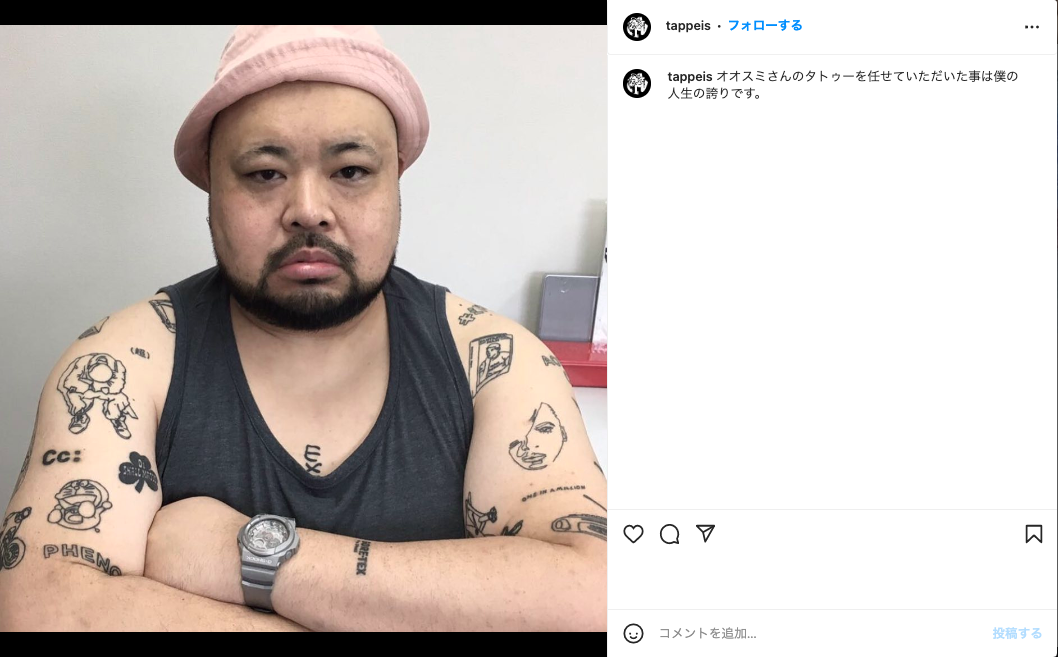
Every tattoo on Takeshi Osumi was done by TAPPEI. “I’m proud to have been trusted to do all of Osumi-san’s tattoos” (From TAPPEI’s Instagram)
Making authentic designs
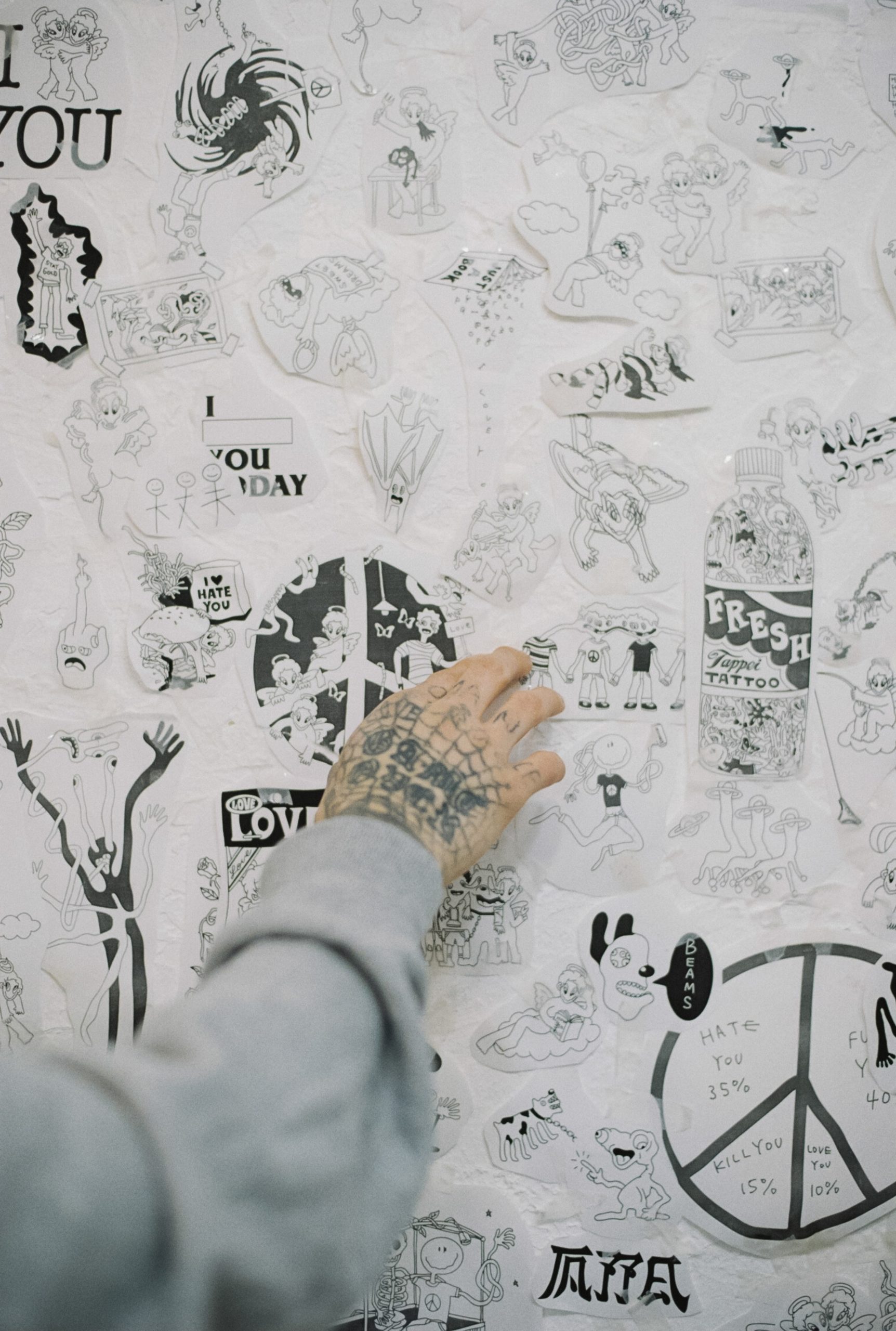
――I feel a sense of humor and irony in your work; how do you develop your designs?
TAPPEI: I don’t get inspiration from films, music, or culture. I come up with most of the designs in my day-to-day life. For example, I’d think, “It’d be interesting if everyday objects moved or were in a different scenario,” and I would draw that. Then, I add a story to the drawing or add a joke to it. I tattoo angels quite often because they blend in without sticking out. By tattooing an angel, I can add playfulness to edgy jokes. You don’t feel like it’s too harsh that way. I like angels because they’re humanlike but also look like characters.
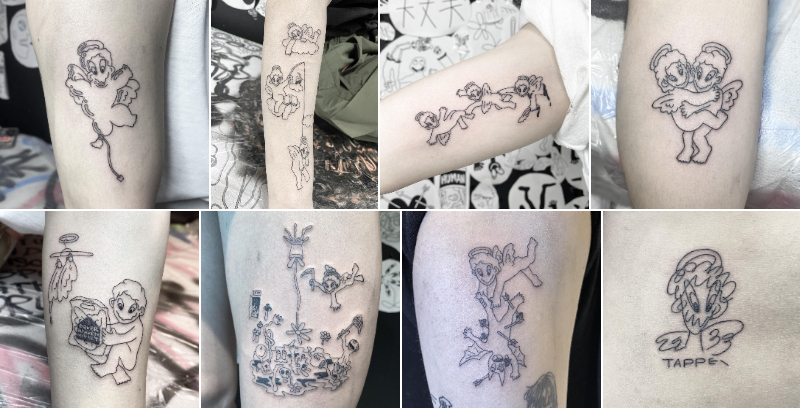
Angel motifs by TAPPEI (from TAPPEI’s Instagram)
――Your playful designs are fantastic. What does your customer base look like?
TAPPEI: Most leave the designs up to me, and many are first-timers. It makes me happy when people say they want to get my designs and that they want my tattoo as an art piece.
――You seldom use color.
TAPPEI: I do for my other art, but I don’t use color for my tattoo designs because I don’t want them to pop too much. I started considering that balance because I worked at a clothing store.
――What’s the appeal of tattoos to you?
TAPPEI: I get the most excited when I get tattoos, more so than buying cool clothes or a watch. I like things that last forever.
――You use canvases too. Is there a difference between that and tattooing?
TAPPEI: I treat them differently. My tattoo designs work precisely because of the medium. I try to leave marks with my pen when I draw on paper. The vibe is a bit different. The mood is the same, but it’s not fun if both mediums have the same style.
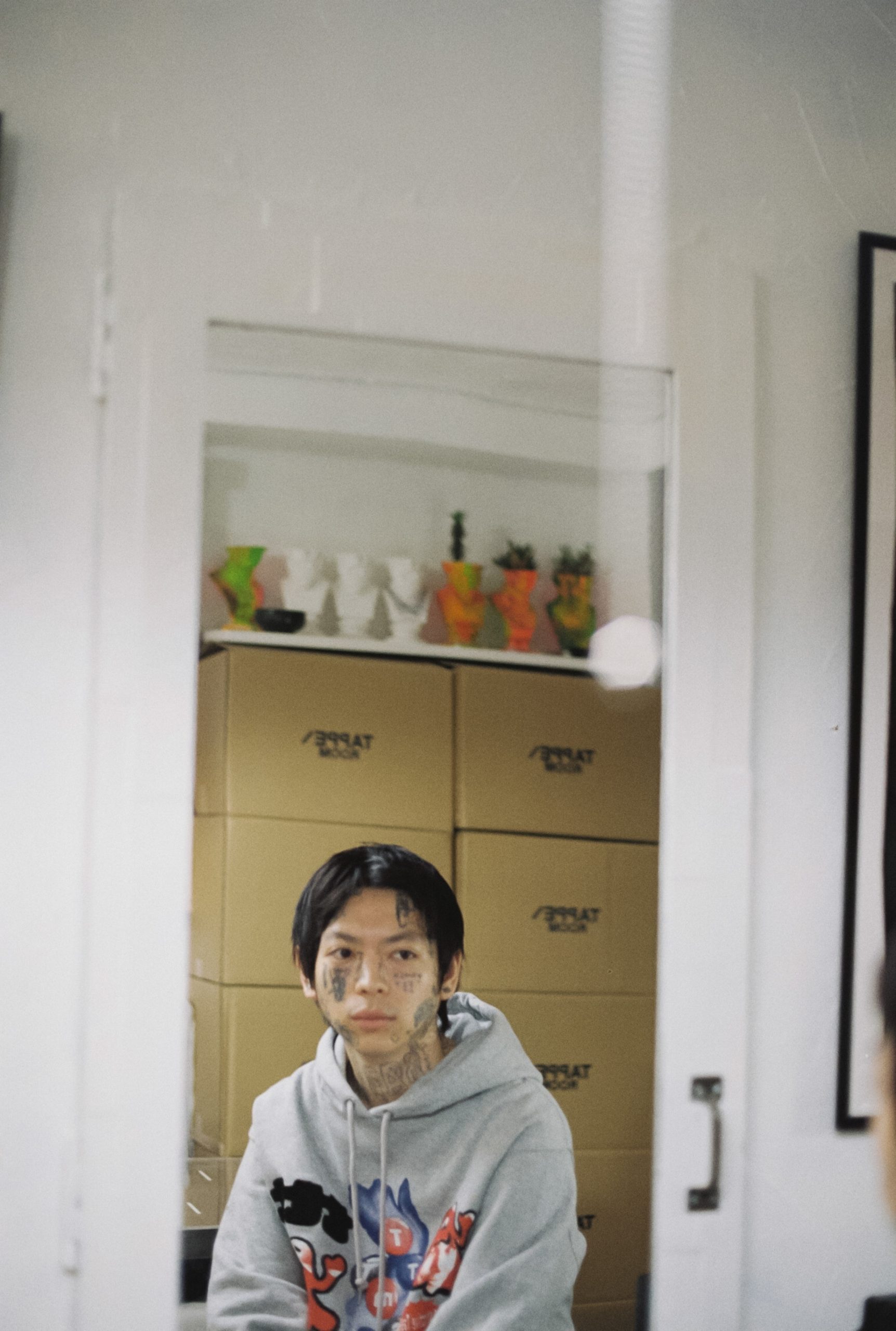
――Is there anything you did to create the authentic style you have today?
TAPPEI: It wasn’t something I practiced; I just kept drawing because I loved it. People often ask me how they could become tattoo artists, and I think the important thing is drawing. Of course, technical skills are essential, but I think what’s more important is figuring out what kind of design you can create.
――Which artist, not limited to the tattooing field, do you like?
TAPPEI: I like Keith Haring. I started liking him because of his pop art, but I fell in love with his way of thinking the more I learned about it. Keith Haring used to draw in subway stations. He placed importance on the message. I want to do that through tattooing. What he did was edgy, but he also worked on commercial design and made art mainstream. That’s what I like about him.
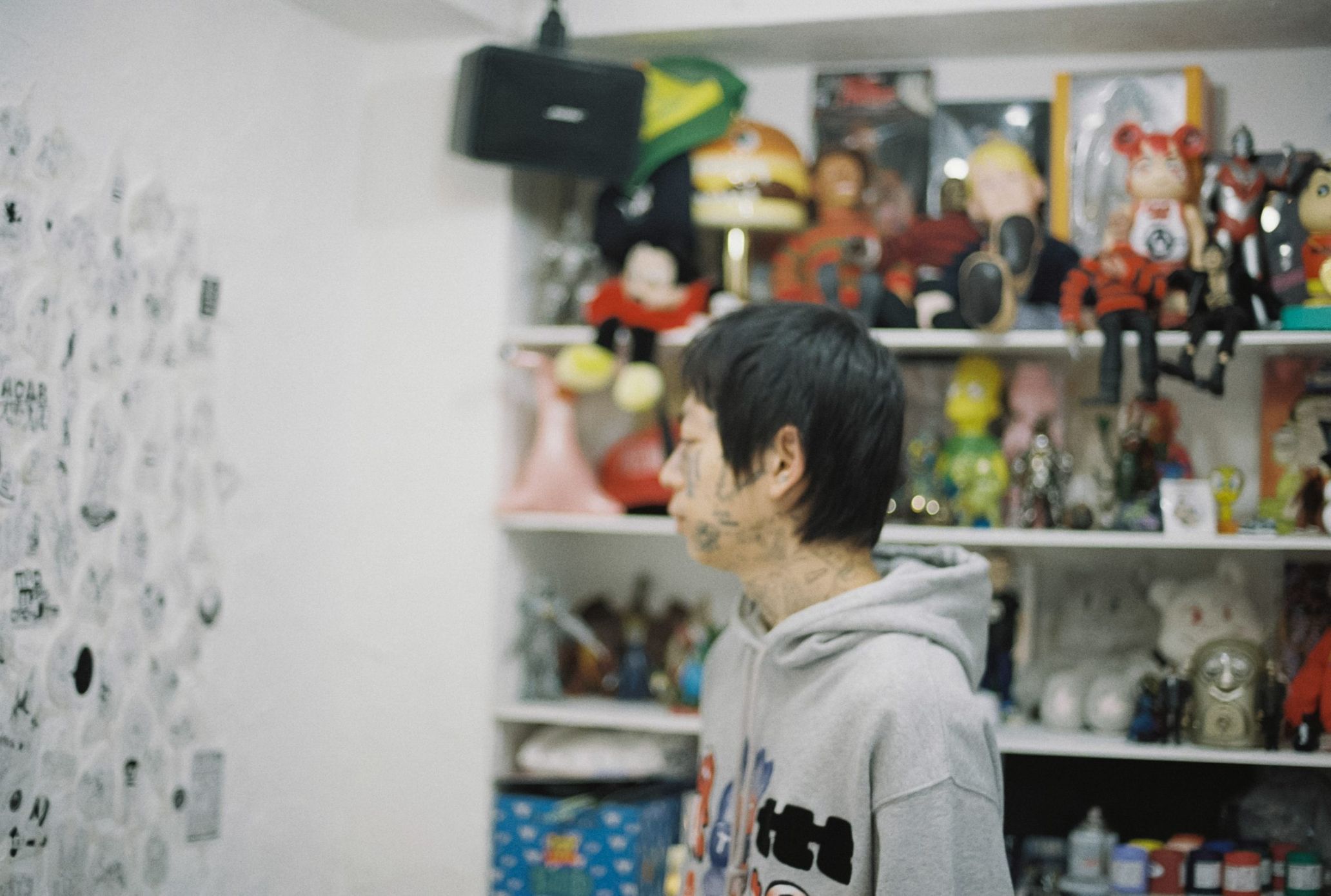
A dynamic career rooted in tattooing
――You recently collaborated with brands like Undercover and Nike and your friends’ brands like Dairiku, TTT MSW, and Randy. You also worked with Beams and Baycrew’s. What was it like collaborating with fashion brands?
TAPPEI: Clothes are challenging. You can’t just slap a graphic on clothing because styling and trends exist. I find it easier to design tattoos because they become a part of the person; the person doesn’t wear them.
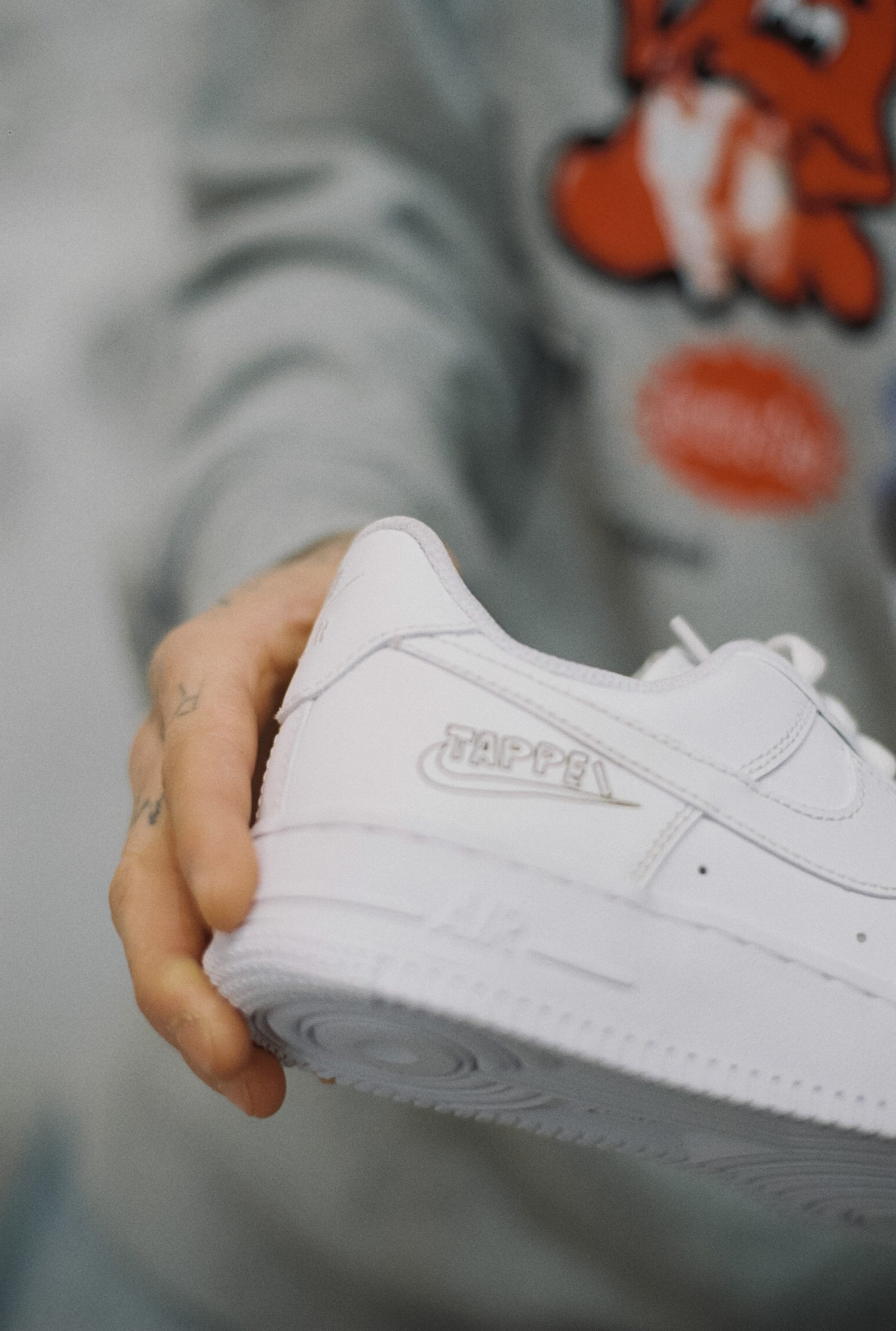
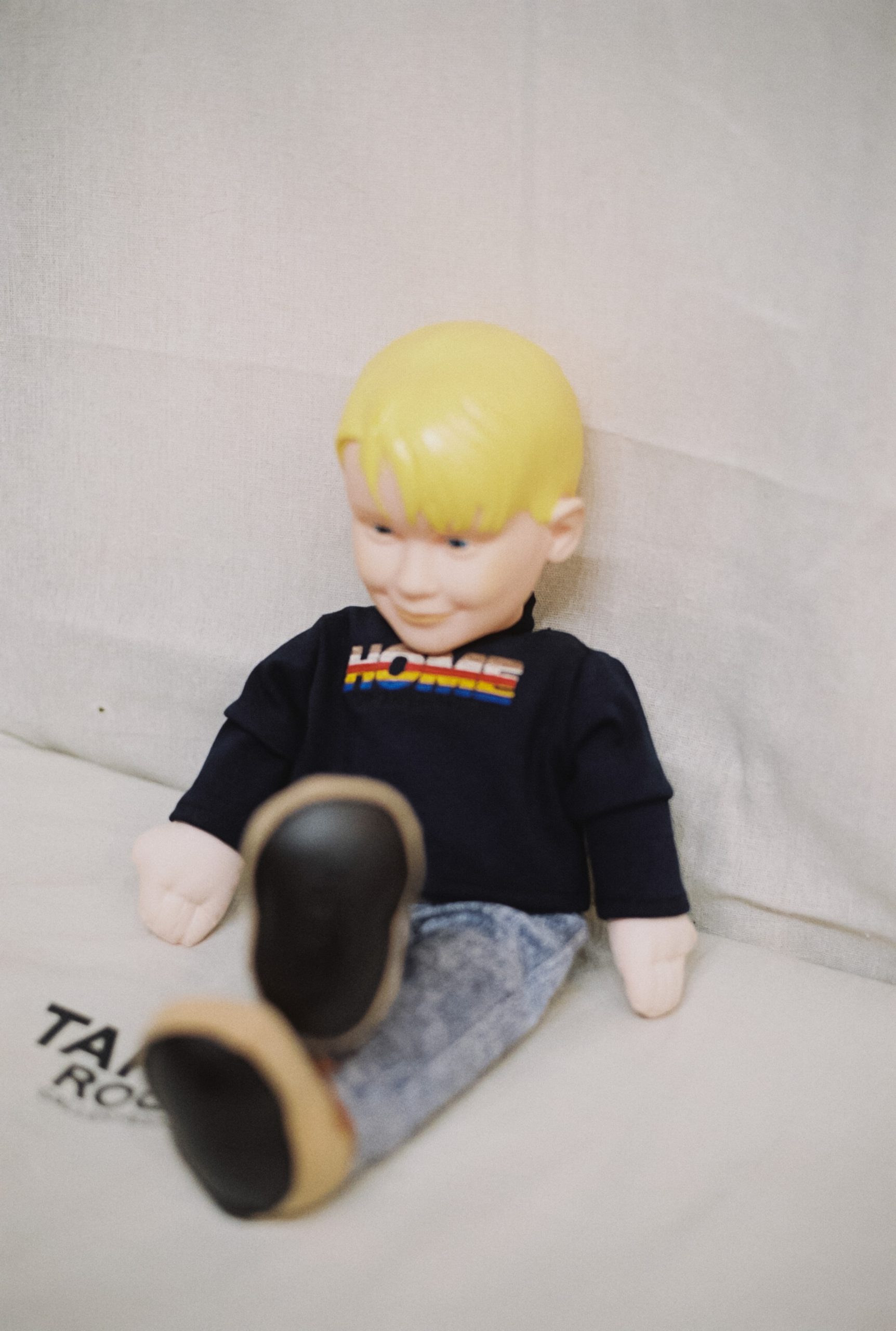
――When collaborating with brands, does the brand request specific designs?
TAPPEI: In most cases, I would draw several designs, and the brand would choose one. But I was able to push my design idea to Undercover.
――What was the design like?
TAPPEI: The one I said I wanted to use was the blindfolded bear. It was a tattoo I gave Osumi-san, so I had a strong attachment to it. Undercover overlayed the bear with another line and made it into a shirt. That part wasn’t my idea, so it was challenging in a good way and fun.
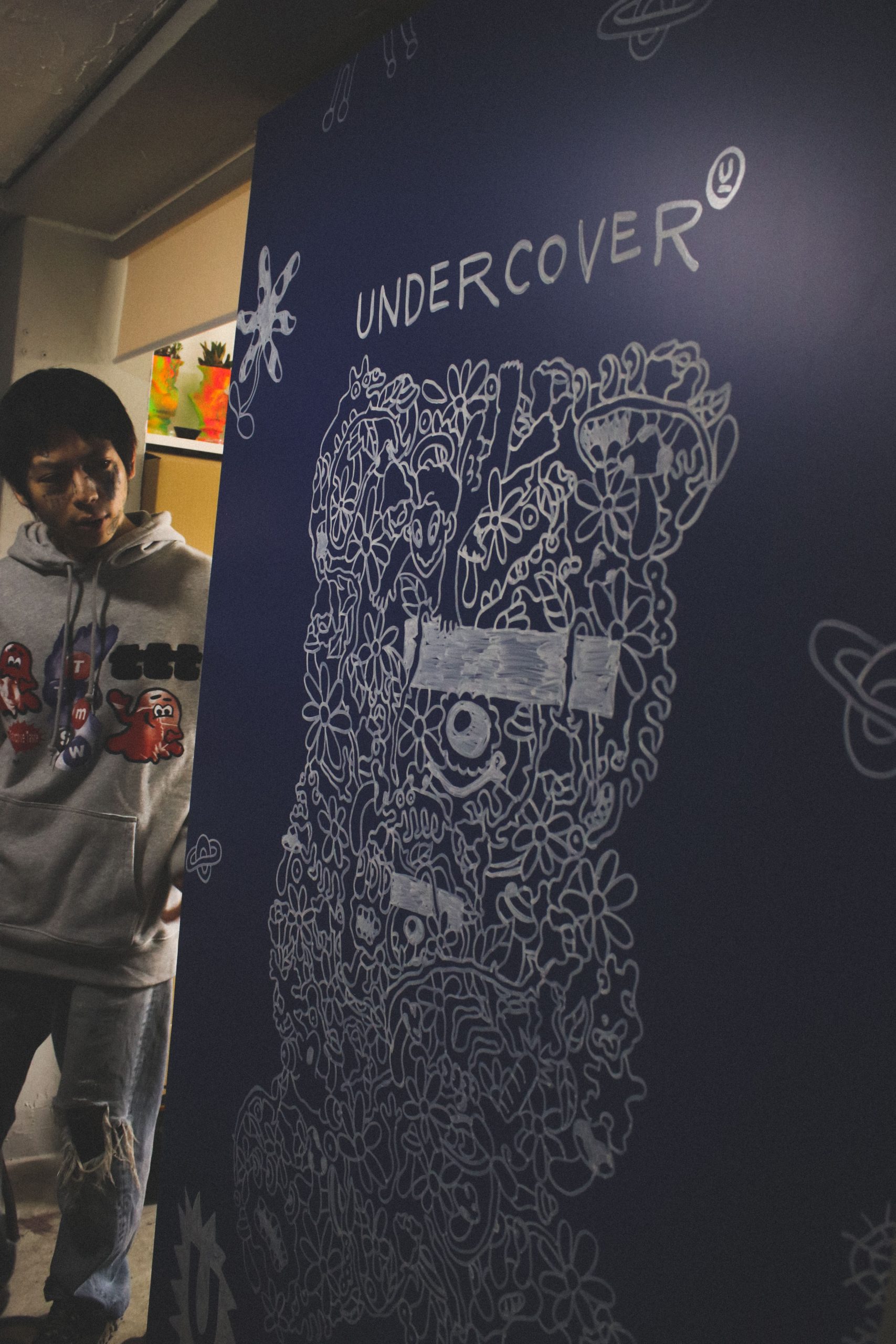
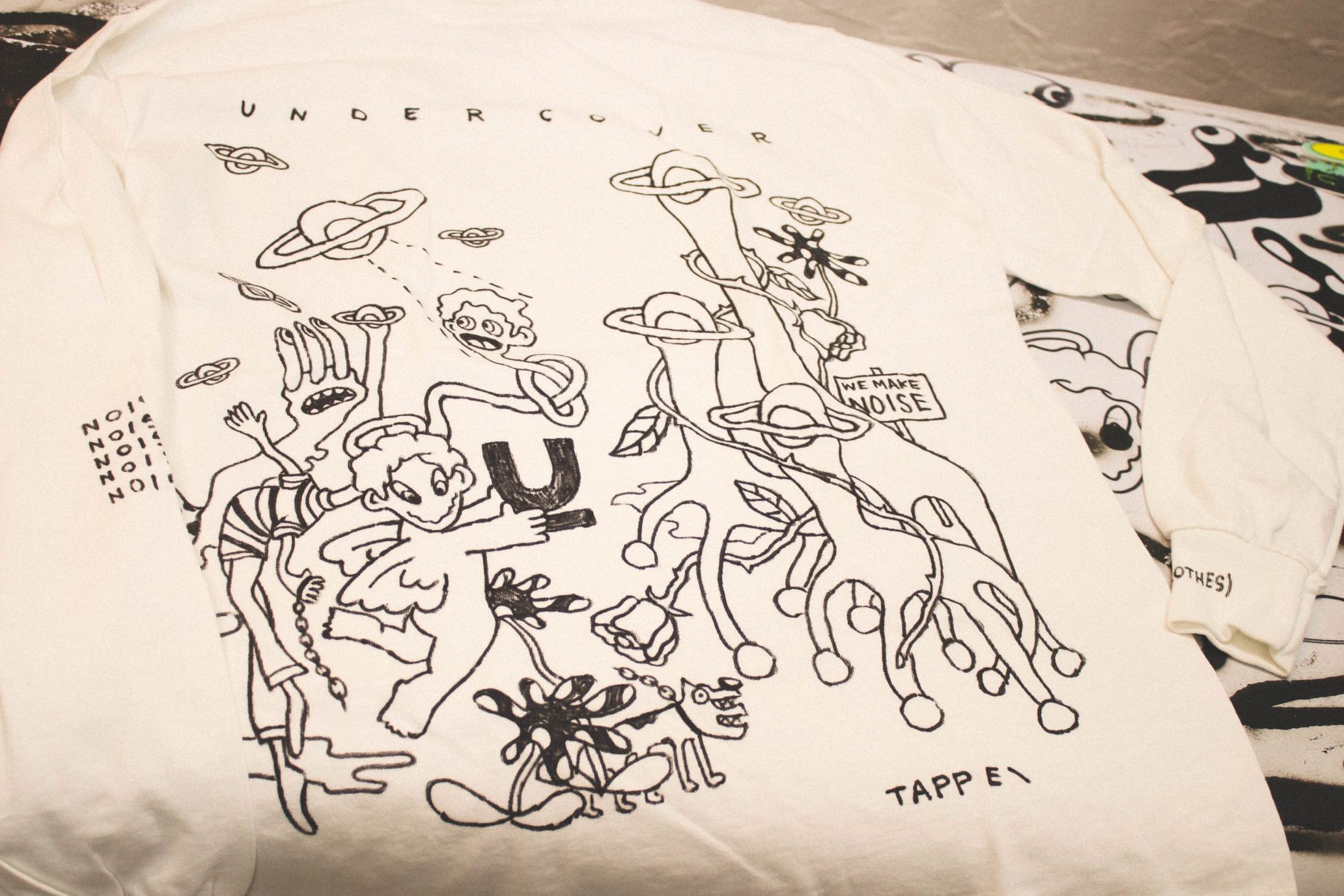
――You used to make your original clothing, too, right?
TAPPEI: I did, but it’s on hiatus because brands have started reaching out to me for collaborations. Now that I’ve collaborated with Undercover, which was my goal, I want to do my best to work with brands that people wouldn’t expect.
――Speaking of unexpected collaborations, you were featured in a video campaign for Zara.
TAPPEI: That was a global campaign, and they had never featured anyone with face tattoos before. I wouldn’t have thought Zara would feature me. It was a fun experience.
――Do you want to go beyond tattooing one day?
TAPPEI: I want to continue tattooing and create other things too.
――What would that look like?
TAPPEI: I’m still in the middle of making it, but I want to create a simple animation. I’m making a flipbook. It takes so much time, so I hope to finish it in a few years. I’m also interested in three-dimensional objects. I like figurines and stuffed toys, so I’m working toward making my own.
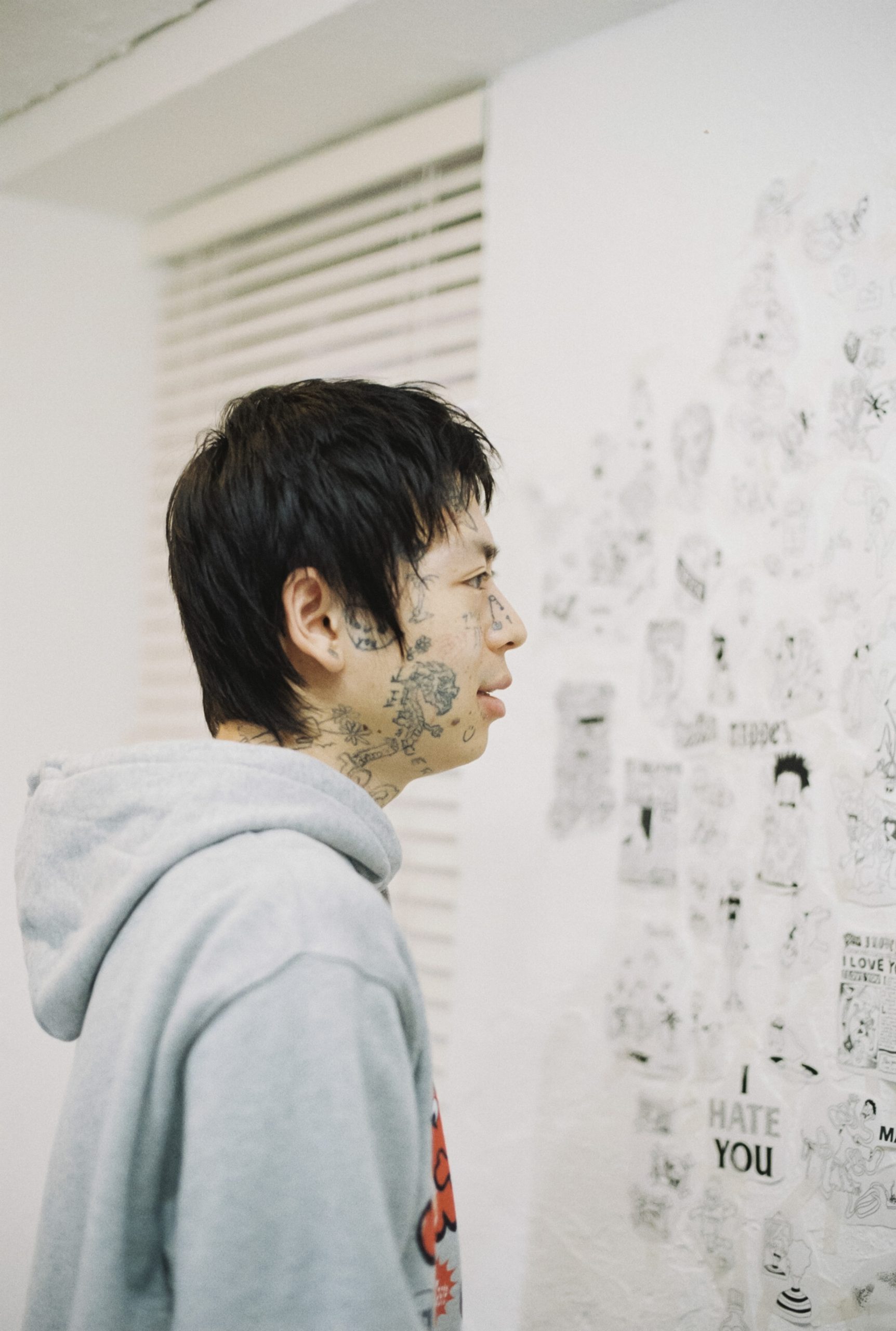
Photography Hana Yoshino
Text Shogo Komatsu
Translation Lena Grace Suda

